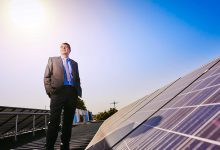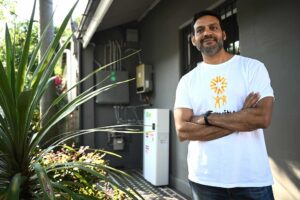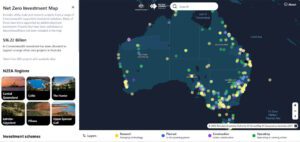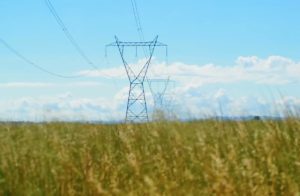Former Clean Energy Finance Corp CEO Oliver Yates is spearheading a new investor pressure group that is urging Australia’s biggest polluter, AGL Energy, to fast-track its exit from coal and align its business with the Paris climate targets.
Yates is CEO of the newly formed Sentient Impact Group (you can hear our recent interview with him on the popular Energy Insiders podcast), which says it is leading a group of impact investors with $50 million worth of AGL shares and is calling for it to develop strategic plans aligned with the Paris 1.5°C target.
The new push comes just days after AGL dramatically abandoned its controversial plan to split its business in two, under pressure from Mike Cannon-Brookes, who had snapped up an 11.3 per cent stake, and other investors, and in the light of a new federal push for climate action.
The Sentient move highlights the growing pressure from institutional and other shareholders – along with the pressures and demands of the energy markets and big finance – for companies such as AGL to align their plans with climate science and the Paris targets.
It also comes amid an unprecedented energy crisis in Australia, where the combination of international events, La Nina, coal plant outages, coal supply shortfalls, and the soaring cost of coal and gas had led to soaring prices on wholesale electricity markets.
Yates says Sentient does not hold shares in AGL but is representing other ESG investors that do. They are not working with Grok, but they see the same opportunities if AGL can abandon its plans to burn brown coal for another two decades and lead a transition to clean energy.
“Sentient looks forward to engaging with AGL, institutional domestic and global investors to secure additional capital to enable the company to fund investments required to facilitate the early closure of high polluting assets,” Yates says in a letter sent to the AGL board this week.
Yates told RenewEconomy that the main message to the AGL board was the pool of capital and investment support that was available, but only if it shifted its corporate strategy to climate aligned targets.
Yates, a former independent candidate for the seat of Kooyong, says the federal election success of Teal independents, including Monique Ryan who successfully beat Kooyong MP and ex Treasurer Josh Frydenberg, could point to a new future in capital markets, where financial and ESG incentives are equally managed.
Sentient has also released a report from Tim Buckley, the ex Citigroup research boss that headed IEEFA and now runs Climate Energy Finance, which argues AGL should take the leading role in Australia’s shift to a zero carbon economy. And they should do this by exiting coal within a decade.
“Rather than taking a leadership position to steward Australia’s energy transition, AGL has been internally focused on a flawed demerger plan, weighed down by poor governance, having missed the accelerating pace of change in the energy market,” Buckley says.
“AGL has been a laggard, eroding shareholder value and missing opportunities for growth.” Buckley notes that AGL shares have 68 per cent of their investment over the last five years, compared to a 28 per cent gain in the broader market.
Buckley argues that the closure of AGL’s two remaining coal generators – Bayswater and Loy Yang A within a decade is necessary because of increased maintenance costs, higher insurance costs, lower reliability, and the political shift evident in last month’s federal election, which will result in more ambitious climate targets.
 Buckley says AGL needs to focus on distributed energy, such as solar, storage and electric vehicles, and large scale renewables, and digitising its business. It says its current forces on renewables and storage is sub scale and unsustainable.
Buckley says AGL needs to focus on distributed energy, such as solar, storage and electric vehicles, and large scale renewables, and digitising its business. It says its current forces on renewables and storage is sub scale and unsustainable.
“AGL could get a competitive edge in the employment market by establishing worker transfer schemes and re- and up-skilling schemes to prioritise redundant workers for jobs in renewable energy,” he says.
“Building large-scale renewable power generation and storage at or near the current coal-fired power generation sites presents an opportunity for both re- and up- skilling of impacted workers.”
Buckley’s analysis says that replacing approximately 5GW in AGL’s coal capacity will require building approximately 12GW in firmed renewable capacity with storage ready for deployment before the coal- fired power generation is shut down.
That would require around $24 billion of capital investment, and AGL’s share of that – assuming it maintains its partnership with Global Infrastructure Partners – would be around $12 billion in debt and equity. AGL’s current plans assume just a fraction off that.
“AGL will further need to invest in leading technologies,” Buckley’s analysis says.
“These investments will enhance AGL’s ability to generate profits from extending the core business. Further, deploying technology that AGL fully or partially owns to the vast customer base of its core business will result in an immediate value uplift.”








